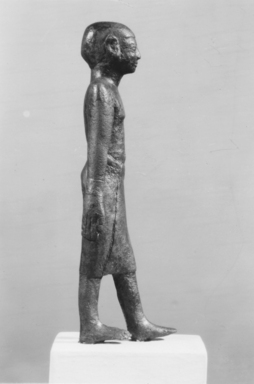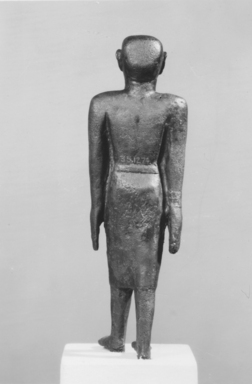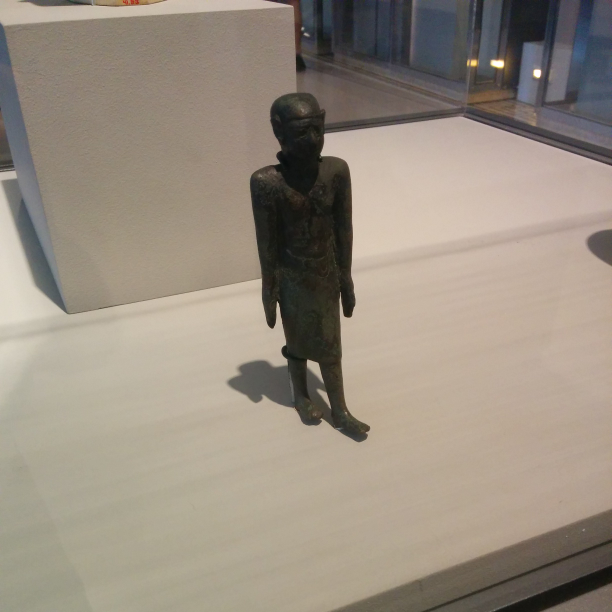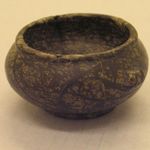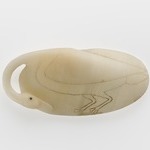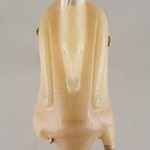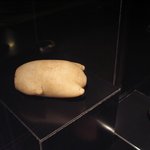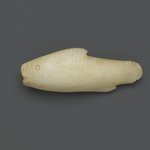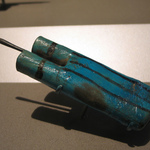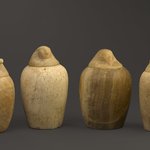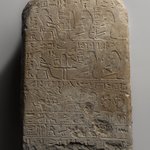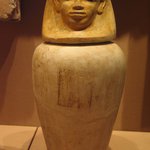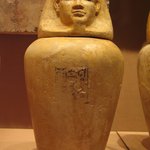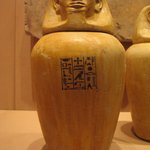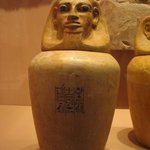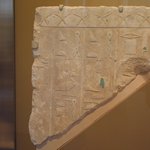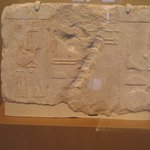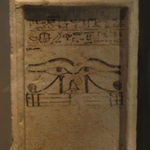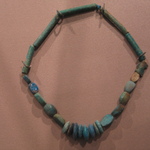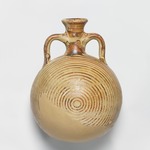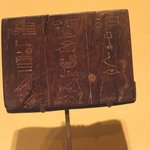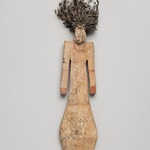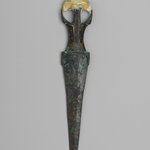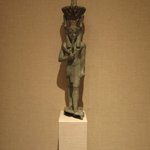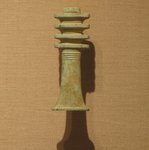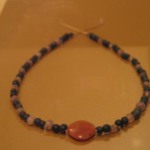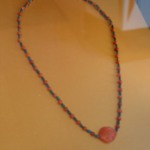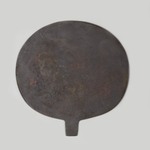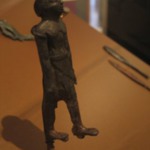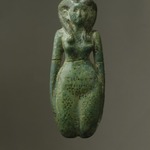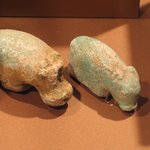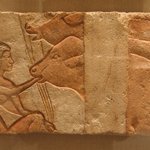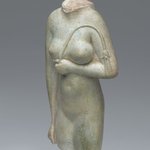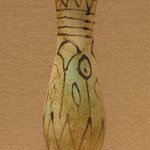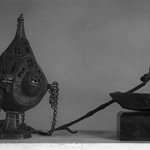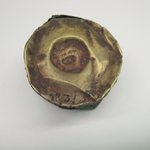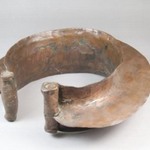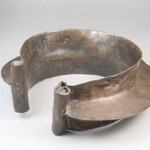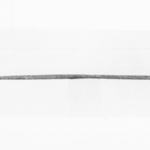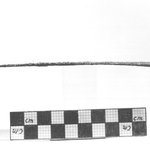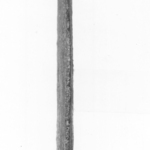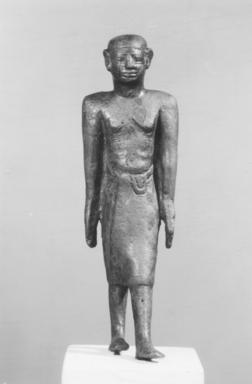

Early Metal Statuette, ca. 1938–1759 B.C.E. Copper, 5 11/16 × 1 9/16 in. (14.4 × 4 cm). Brooklyn Museum, Charles Edwin Wilbour Fund, 35.1274. Creative Commons-BY (Photo: Brooklyn Museum, CUR.35.1274_NegA_print_bw.jpg)

Early Metal Statuette, ca. 1938–1759 B.C.E. Copper, 5 11/16 × 1 9/16 in. (14.4 × 4 cm). Brooklyn Museum, Charles Edwin Wilbour Fund, 35.1274. Creative Commons-BY (Photo: Brooklyn Museum, CUR.35.1274_erg2.jpg)
Early Metal Statuette
Egyptian, Classical, Ancient Near Eastern Art
On View: Old Kingdom to 18th Dynasty, Egyptian Galleries, 3rd Floor
Although ancient texts reveal that the Egyptians fashioned copper statuary in human form at least as early the Second Dynasty, this Middle Kingdom statuette is one of the oldest preserved examples. The figure stands in a traditional pose, with the same type of kilt and short hair that appear on many stone images of officials.
MEDIUM
Copper
DATES
ca. 1938–1759 B.C.E.
DYNASTY
Dynasty 12
PERIOD
Middle Kingdom
DIMENSIONS
5 11/16 × 1 9/16 in. (14.4 × 4 cm) (show scale)



COLLECTIONS
Egyptian, Classical, Ancient Near Eastern Art
ACCESSION NUMBER
35.1274
CREDIT LINE
Charles Edwin Wilbour Fund
PROVENANCE
Archaeological provenance not yet documented; by 1913, published by Friedrich Wilhelm von Bissing; before 1934, acquired by the Scheurleer Museum, the Hague, the Netherlands; 1935, purchased from the Scheurleer Museum by the Fondation Egyptologique Reine Elisabeth; 1935, purchased from the Fondation Egyptologique Reine Elisabeth by the Brooklyn Museum.
Provenance FAQ
CATALOGUE DESCRIPTION
Bronze figure of a standing man in the conventional posture. He wears a long kilt. The details of the head are rather course and his arms are a trifle too long. The bronze has taken on a dark green patina. He wears a metal band on his right wrist.
Condition: Excellent.
EXHIBITIONS
MUSEUM LOCATION
This item is on view in Old Kingdom to 18th Dynasty, Egyptian Galleries, 3rd Floor
CAPTION
Early Metal Statuette, ca. 1938–1759 B.C.E. Copper, 5 11/16 × 1 9/16 in. (14.4 × 4 cm). Brooklyn Museum, Charles Edwin Wilbour Fund, 35.1274. Creative Commons-BY (Photo: Brooklyn Museum, CUR.35.1274_NegA_print_bw.jpg)
IMAGE
overall, CUR.35.1274_NegA_print_bw.jpg. Brooklyn Museum photograph, 2023
"CUR" at the beginning of an image file name means that the image was created by a curatorial staff member. These study images may be digital point-and-shoot photographs, when we don\'t yet have high-quality studio photography, or they may be scans of older negatives, slides, or photographic prints, providing historical documentation of the object.
RIGHTS STATEMENT
Creative Commons-BY
You may download and use Brooklyn Museum images of this three-dimensional work in accordance with a Creative Commons license. Fair use, as understood under the United States Copyright Act, may also apply.
Please include caption information from this page and credit the Brooklyn Museum. If you need a high resolution file, please fill out our online application form (charges apply).
For further information about copyright, we recommend resources at the United States Library of Congress, Cornell University, Copyright and Cultural Institutions: Guidelines for U.S. Libraries, Archives, and Museums, and Copyright Watch.
For more information about the Museum's rights project, including how rights types are assigned, please see our blog posts on copyright.
If you have any information regarding this work and rights to it, please contact copyright@brooklynmuseum.org.
RECORD COMPLETENESS
Not every record you will find here is complete. More information is available for some works than for others, and some entries have been updated more recently. Records are frequently reviewed and revised, and we welcome any additional information you might have.
